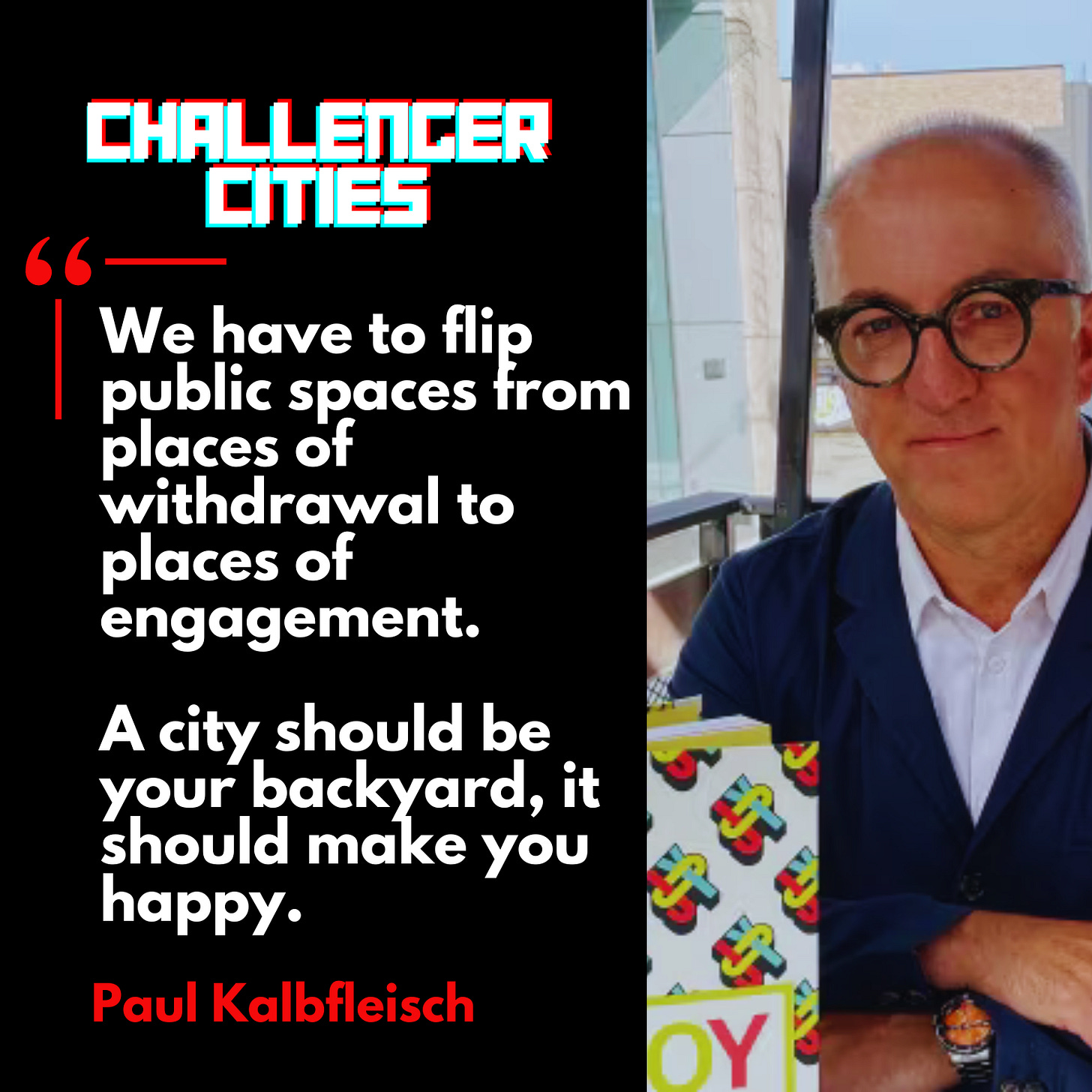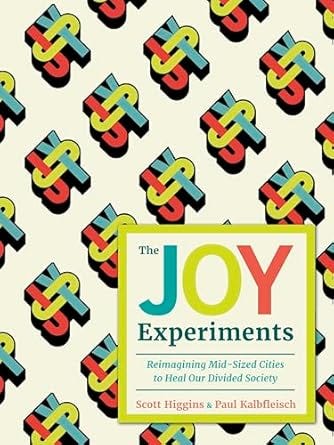When I first met Paul Kalbfleisch, it was through a recommendation that went something like this: “You need to talk to this guy—he wrote a great book.” The book in question, The Joy Experiments: Reimagining Mid-Sized Cities to Heal Our Divided Society, had already made its way onto numerous coffee tables, and after our conversation, I understood why. Paul has a way of reframing cities, not as static backdrops to our lives but as dynamic spaces brimming with potential for connection, play, and belonging.
Paul describes his journey into urbanism as a happy accident. “I’m not an architect or an urban planner,” he admitted. “One could argue I have no business doing what I’m doing.” But as he put it, quoting Richard Florida, “Lucky people find themselves in the middle of things they have no business being in—and that’s the value they bring.”
His career began in marketing, including a stint as Vice President of Global Brand Strategy at Research in Motion (better known for BlackBerry). After leaving the corporate world, he was asked to develop a strategy for designing public spaces in Ontario’s Waterloo Region. This led to the creation of his “creative intersections” concept, aimed at embedding the region’s innovative spirit into its identity. Though the regional government shelved the plan, a local developer embraced it, sparking Paul’s seven-year deep dive into what makes cities thrive.
At the heart of Paul’s thinking is a simple but transformative idea: cities need to prioritize play. “Play is the most complex social activity humans do,” he explained. “It’s where we learn to collaborate, see differences as assets, and celebrate together. When we dismiss play as frivolous, we do ourselves no favours.”
One of Paul’s most powerful examples of public play is a project in Cambridge, Ontario, where an installation called Meander—a sprawling, illuminated sculpture inspired by the Grand River—became a focal point for the community. “During a performance of it, someone pointed to the sculpture and said, ‘That’s the heart of Cambridge. That is the heart of us.’ At that moment, it became more than art—it became a story, our story.”
Paul’s belief in the transformative power of play extends to his vision for how cities should evolve. He challenges the traditional “live, work, play” mindset, flipping the order to “play, live, work”. Why? “When you think of play as where we collaborate, break down barriers, and learn to trust, it stops being optional—it becomes essential.”
We also discussed the unique opportunities for mid-sized cities to lead the charge. “Mid-sized cities are where the opportunity is,” Paul said. “If we can take 200 mid-sized cities and turn them around, that’s significant. They’re small enough to make meaningful changes and big enough for those changes to matter.”
For Paul, cities are at their best when they serve as “living rooms” for their citizens—a place to belong and to connect. “A city should make you happy,” he said. “It should make you feel like you belong to something. The collective human spirit of a city is its strongest social and economic attribute.”
Toward the end of our conversation, I asked Paul what advice he would give to someone feeling powerless to create change. His response was as direct as it was empowering: “Start demanding, asking, and participating in your community. Let your city officials know what you value—because all they ever hear are complaints. Turn off your cell phones, go to the park and engage with your city.”
In a world increasingly divided and digital, Paul’s perspective feels refreshingly tangible. As he put it, “We will not solve the problems of the world by using grim determination to tackle grim problems. If we double down on grim, people will feel society is failing. We need joy to make cities stronger. That’s how we change the world.”
It’s a message we could all stand to hear more often. Then act on!
You can find Paul’s book at all great bookstores. And also Amazon.
https://www.thejoyexperiments.com/














Share this post